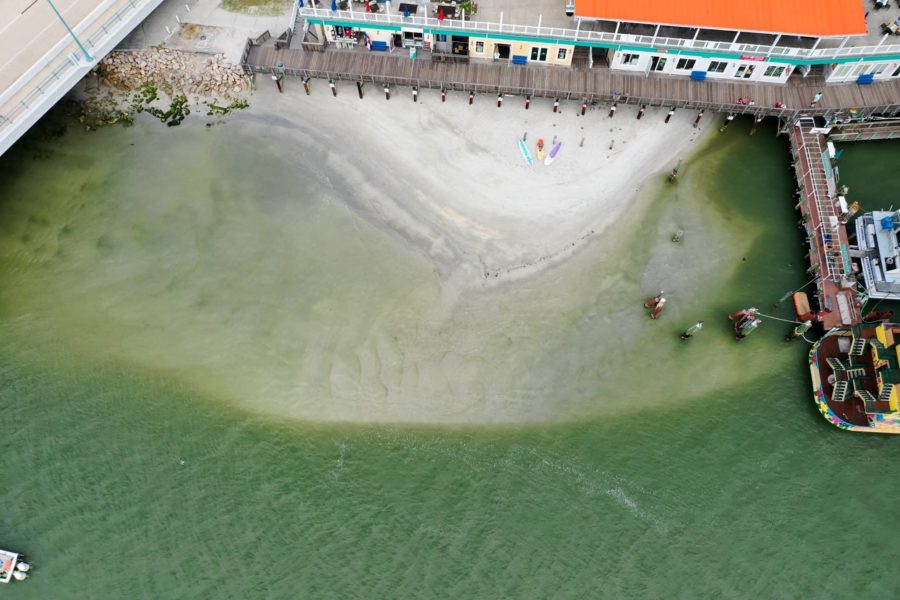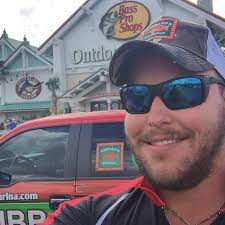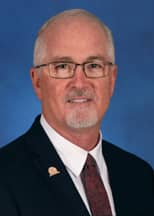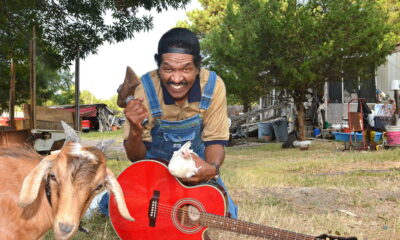Thrive
John’s Pass and the beach nobody wants

For decades, residents, business owners and city officials have desperately sought solutions for the vast accumulation of beach sand adjacent to the John’s Pass Village and boardwalk in Madeira Beach.
Help is supposed to be on the way as Gov. Ron DeSantis included $1.5 million in funding for a dredging project at the popular tourist destination in June. However, those spearheading the initiative to remove the beach sand that threatens the environment, commerce and swimmers worry that bureaucratic gridlock will continue to hinder mitigation efforts.
Hubbard’s Marina has operated on John’s Pass since 1976. By the late 1990s, the family-owned business began noticing sand overtaking a jetty and pouring into the channel. According to Captain Dylan Hubbard, the fourth-generation owner of the marina, the problem increased exponentially following a Florida Department of Transportation (FDOT) bridge construction project in 2006.
Hubbard has been at the center of efforts to rid the fishing village of the unwanted “beach” over the last several years, creating a website devoted to the issue and a change.org petition that has garnered nearly 12,000 signatures.
“Finally, thank God,” said Hubbard of his reaction to hearing that the dredging project received state funding. “1997 was the first time that my family sent a letter to a politician on the issue, and we’ve been battling this for a really, really long time.”

Aerial time-lapse photos showing the sand accumulate over the years.
The dangers
The accumulated sand has caused a myriad of problems for area stakeholders. It blocks storm drains, renders commercial docks unusable, forces marine life to traverse the channel underneath vessels and lures swimmers into an undesignated area with potentially lethal, fast-moving currents.
Inaction, said Hubbard, resulted in the problem increasing exponentially over the years.
“Again, our first letter was sent in ’97 – and our first meeting (with government officials) didn’t occur until the end of 2021.”
The John’s Pass boardwalk draws hundreds of thousands of annual visitors, and Madeira Beach Fire Chief Clint Belk reportedly called it the county’s leading site for water rescues. Many see an inviting beach area adjacent to the boardwalk without realizing it is unsafe for swimming.
Hubbard explained that as the channel becomes narrower, the strength of its swift current increases and the accumulated sand makes for a steep ledge into the deeper water. That often results in unaware bathers getting swept into the pass.
Belk publicly sounded the alarm on the danger in 2020, stating that “without a resolution to this problem, I can say that we are on borrowed time before something bad happens.”
In May, just a month before the funding for dredging was approved, the Pinellas County Sheriff’s Office reported that four swimmers became caught in the current. Paddleboarders were able to rescue three of the people, but one died in the water.

Capt. Dylan Hubbard, fourth-generation owner of Hubbard’s Marina. Photo: facebook.com
“You take a dangerous pass, and you constrict that flow … you increase the current’s power,” said Hubbard. “People are swimming on a beach – which they think is just a normal beach – and they go out there and lift their feet off the ground and get dragged offshore.
“Just a few weeks ago, we rescued a little child that got swept out to sea because we happened to be there on the dock saw the mom screaming hysterically and jumped into action. It’s really unfortunate that people’s lives are being put at risk before this issue is addressed.”
Economic impacts
Hubbard explained that the popular tourist destination is one of the county’s most significant economic drivers. Any loss of commercial activity in John’s Pass, he said, is a loss to the area’s tax base.
He understands when local officials believe it is an issue for surrounding businesses, but noted that most of the problem occurs over state sovereign land. He said flooding poses the most significant risk to the fishing village, as the sand blocks storm drains, and even a slight rain can cause entrances to become impassable.
Hubbard said that 24 state employees recently vacuumed a DOT drain for 12 hours to prevent flooding, which is now an almost weekly occurrence.
“We had 41 businesses in John’s Pass Village sign a petition that was basically all centered around business access,” said Hubbard. “Because we all know, and we all have seen, what happens when those drains get flooded.
“And it happens very easily, and it happens very often.”
Hubbard said his marina is the only business with large vessels that park parallel with the boardwalk. He explained that prevents sand from continuing to push eastward at an alarming rate, although sometimes the boats end up sitting on dry land. If his company relocated, he said the sand would inundate the docks and force the businesses that depend on them to close.

Hubbard said 41 businesses in the fishing village signed a petition due to the rate of flooding caused by sand blocking storm drains. Photo courtesy of hubbardsmarina.com/savejohnspass.
Status of the dredging project
Madeira Beach Mayor John Hendricks said his city has received the money from the state for the dredging. He added that Pinellas County has spearheaded the necessary studies, although officials have made it clear that the city, state and private stakeholders are responsible for funding the project. “They are helping us technically in going through the process,” said Hendricks.
County Administrator Barry Burton said that in addition to initiating the study and providing staff expertise to identify solutions, the county also coordinated with the Army Corps of Engineers and the Florida Department of Environmental Protection (FDEP) to reuse the excavated sand. He said the cost to Madeira Beach would have been much higher without that approval.

Barry Burton, Pinellas County administrator. Photo: pinellascounty.org.
“The county likewise will assist the city in any manner they need to complete the project,” said Burton. “Their contract engineers are the same that we would hire to complete the project, so we have been in contact with them and think they are in good shape to implement once all permitting and approvals are complete with state and federal agencies.”
Hubbard placed most of the blame for inaction on the county shifting responsibility for the project. However, he noted the area spans seven jurisdictions, with 10-15% privately owned and the largest portion state submerged land.
FDOT controls eight feet on both sides of the bridge, he said, along with one storm drain. The city owns another storm drain, and he said the county owns the jetty. As Burton noted, permitting goes through the Army Corps of Engineers and the Department of Environmental Protection (DEP).
“If you talk to the DEP, they tell you to go to the Army Corps,” said Hubbard. “You go to the Army Corps; they tell you to go to the county. You go to the county; they tell you to go to the city. You go to the city; they tell you to go to the county.”
Logic and efficiency, said Hubbard, “go out the window” when dealing with multiple government entities. He has undergone the process more times than he could count, he said, to no avail. While he is thankful for the state representative, and to Hendricks and city officials for fighting for the funding, Hubbard said they are a long way from the finish line.
“We got the money, but that doesn’t mean sh– until a project has been created, and vetted and permanent,” said Hubbard. “And we’re a long way from that.”
However, Burton said that people unwilling to pay for solutions blame others. He said some stakeholders disagree with the county dredging by assessment, meaning the benefitting property owners pay for the improvements.
“This occurs all the time in other jurisdictions, and we have proposed that in areas that request it,” added Burton.
Hendricks said he instructed the city manager “to fast-track everything as quickly as possible.” He hopes to start the project in November, which will go out bidding after the city and county acquire the necessary data. Hubbard mentioned that snook and tarpon are currently spawning, and turtle nesting season lasts until the end of October. Hendricks said the sand will end up on Madeira Beach, so the wait is due to a combination of permitting and ecological concerns.
Hendricks said the initial process will take several months either way, but the city is moving it forward to the best of its ability.
“I’ve been working on it for two years – ever since I’ve been in office, really,” said Hendricks. “Dylan’s been working on it much longer than that.”
Hendricks declined to criticize the county, instead stating that everyone needs to work together to achieve a common goal. He said Madeira Beach needs help getting through such a critical process, and he looks forward to the permitting assistance.
A potential long-term solution
Hubbard calls dredging the area a “short-term, Band-Aid solution.” According to his website, local stakeholders spent nearly $200,000 dredging private property in the area in 2017, and the sand returned en masse in less than 10 months.
He said officials must strengthen and extend the nearby jetties, particularly the north jetty, to keep the sand from returning. However, according to Hubbard, Pinellas County officials are adamant that strengthening and lengthening the jetties is not under consideration.
“Because it’s too difficult, is essentially the idea,” said Hubbard. “They increased the south jetty at Blind Pass … and it took them 25 years of studies and bureaucratic red tape to be able to do that.
“The John’s Pass jetty – it will cure the problem, and it will be a long-term solution. But it’s very expensive, and it’s very difficult.”
Burton stated that jetties fall under the Army Corps of Engineers’ purview, and are not the county’s responsibility.
Hendricks said he agrees with Hubbard’s assessment. The mayor relayed that some people have said he is not an expert on the matter, and while that may be true, he noted that he is a native Floridian who has spent the last 35 years in the area. He said that every major inlet has significant jetties, helping to avoid the issues plaguing John’s Pass.
“We’ve been told that we don’t know if the jetties are put in, what ramifications there will be for the beaches south of us,” said Hendricks. “I don’t know that I agree with that.
“So, I 100% agree with Dylan Hubbard that we need longer jetties.”

Madeira Beach Mayor John Hendricks. Photo: madeirabeachfl.gov.
The city’s next project, said Hendricks, is making a borrow pit with the sand from John’s Pass for other local beaches to use during renourishment efforts – although more extensive jetties would prevent the sand from entering the area in the first place. He added that Madeira is the only beach in the county that has never received funding for renourishment due to its groins that hold the beach sand in place.
Hendricks would like to see an ongoing maintenance program for John’s Pass and noted that the sand would likely accumulate to the point of needing dredging again in seven to ten years.
Hubbard acknowledged that his proposal could potentially impact beaches to the south and the significant cost associated with completing the necessary studies. However, he said that even if the project’s price tag is $30 million, it could provide a generational solution that would pay for itself through issuing fishing permits for the jetties.
Using the cost to fish off the Skyway Fishing Pier and the Redington Long Pier before its demolition as examples, Hubbard said people “would easily pay” $10-$20 to fish off the jetty. He said the structure would last 100 years and believes it would pay for itself in less than 20.
In addition, Hubbard said sand would accumulate to the north of the jetty, increasing the size of Madeira Beach and providing more gulf access or an area for an event space.
“It’s a win-win,” said Hubbard. “For the county, for the city and for the area. It makes no logical sense that it’s not been further evaluated.”
For more information, visit the website here.








OriginalJud
July 20, 2022at8:34 pm
Man me and my wife been going down there and hanging out on that beach quite often and then partaking in the restaurants and bars at John’s pass Just constantly advising people not to swim out in that current
Minedga. Archilla-McNamee
July 20, 2022at4:19 pm
I agree with “Mel!!
Mel
July 20, 2022at6:57 am
Kind of stupid to think that the state should fix this. Make it a private project and fund it from the businesses in the area. You could probably do it for half (or less) than the state is spending.